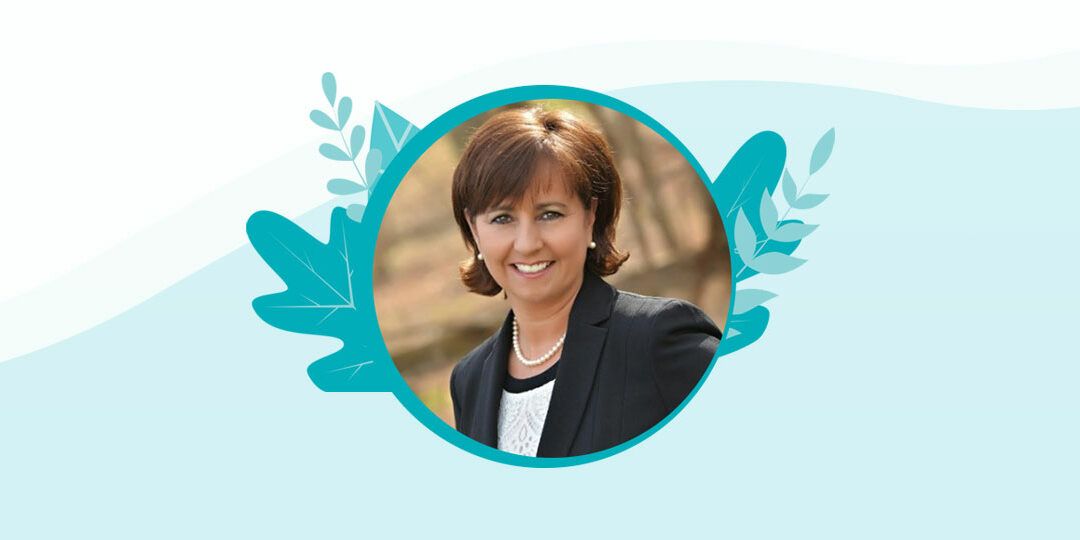In 2017, shortly after becoming the 15th president of Carroll University in Waukesha, Wisconsin, Dr. Cindy Gnadinger was diagnosed with cancer. She was stunned.
“The only thing I could think of was, ‘I don’t have time for this right now,’” she told Capture Higher Ed CEO Len Napolitano during Capture’s virtual conference in June. “I had just started a new job. We had a strategic plan we were finalizing.
“So, I paused and began doing what I always do. I recognized what I could and could not control. I made a plan. I worked the plan. I made a backup plan.”
During her interview with Napolitano, Gnadinger discussed the crisis management and scenario planning she has employed during such powerful professional and personal challenges as overseeing the closing of a university, being diagnosed with cancer, managing college enrollment’s “demographic cliff” and, of course, leading a university amid the disruption and uncertainty of a worldwide pandemic.
“I feel like I’ve become a master of scenario planning,” she said.
Closing St. Catharine
Gnadinger is one of the few presidents who has overseen the process of closing a college. She described the experience as one of the most defining moments of her professional and personal life.
She arrived at St. Catharine College, a small Roman Catholic liberal arts college near Springfield, Ky., in 2014 as the institution’s new vice president for academic affairs. With a strong background in accreditation, she began to tackle several challenges the institution was facing with its academic programs.
“I studied everything about this institution and its academics, and I knew I could make a difference and help what was needed there,” Gnadinger said. “I was excited to take on this position.”
But shortly after she arrived, she learned the college had some serious problems in the financial aid and compliance area — problems not necessarily under her purview but impactful to the entire institution. When the long-standing president decided to retire, the board approached Gnadinger to lead the college during the tumultuous time.
Three scenarios were on the table for St. Catharine:
- The college would carry on as a viable institution.
- The college would explore a merger or acquisition.
- The college would work through the process of closing.
“Honestly, it was the most stressful 18 months of my professional life,” Gnadinger recalled. “It was a complicated situation. Basically, some things were out of our control and some things were not. It was important to me as the leader to distinguish between those two things. I worked on the things we could control. That’s an important piece of what I’ve learned during these defining moments of my life.”
Plan A to Plan Z
Gnadinger began to do some “scenario planning” — outlining what success would look like; what failure would look like; what was the best-case scenario; what was the worst-case scenario. She made her plan and began working the plan.
“We started with viability,” she said. “How can we make this the most viable campus? I put together a plan. And I always have a backup plan, plan B. And then plan C. Well, I’ve got to tell you, with this campus, I got all the way to plan Z.
“I tried every scenario for viability, and I realized that was not going to happen.”
That’s when Gnadinger’s team turned their attention to merger and acquisition — again recognizing what was in their control and what was not. The college labored over all aspects of a plan for merger, again creating a plan, a backup plan, and backup plans to the backup plans. In the end, after 18 months of hard work, it became clear that closure was the only option.
“Again, I had to develop and work a plan: How to close an institution, something not a lot of people have experience with,” Gnadinger said. “It’s painful. If anyone has ever had to close a campus, it is a painful process for our students, our faculty, our staff, the community. It’s very similar to a death, and you go through the stages of grief and loss in that process. But, because I planned it so thoroughly, I was feeling at peace in the end — that we left no stone unturned, and it was the only answer we were left with.”
Facing the Demographic Cliff
From her cancer battle to the challenges of the pandemic, Gnadinger still uses the lessons learned from St. Catherine. When facing new challenges, she follows the same plan of action: “Identify what I can and cannot control. Make a plan. Work the plan. Always have a backup.”
When Gnadinger arrived at Carroll University five years ago, one of the first conversations she had with her vice president of enrollment was about the demographic challenges colleges would be facing due to a steep decline in the U.S. birthrate from 2007-2020.
Gnadinger said: “We know the demographics. We know where we’re headed. What’s our plan? You don’t wait until it’s upon you to say, ‘Now what are we going to do? You make your plan and start working your plan. So, when it’s here, that demographic cliff if you will, we’re ready for it. We started planning five years ago for this.”
Carroll University has been managing its way through these difficult times in enrollment through a combination of tapping into new markets and reviving old markets to keep undergraduate enrollment steady while increasing graduate programming in high-need areas in their region.
Before, Carroll focused its undergraduate recruiting mostly on in-state students and those from Northern Illinois. Gnadinger recognized this needed to change.
“I knew the demographics,” she said. “We knew we had to create new markets. So, we worked on that for undergraduate. We were very strategic about it. The new markets we looked at might not work for other institutions around the country. You have to look at what works for you.”
Carroll also reenergized its efforts in some older markets — ones that had been positive and productive in the past but had in subsequent years been let go. “We have a lot of alums in those areas. We wanted to reconnect in those markets.”
You know the next part: So, Gnaginger and her team put together a plan and began working the plan.
Go to this video to hear what else Gnadinger had to say during her fascinating and inspiring INNOVATE 2022 session.
By Kevin Hyde, Senior Content Manager, Capture Higher Ed




